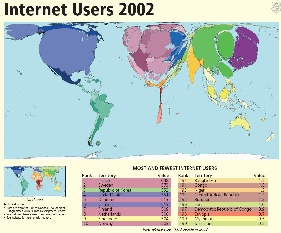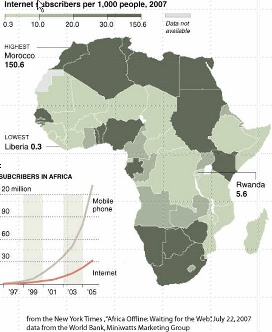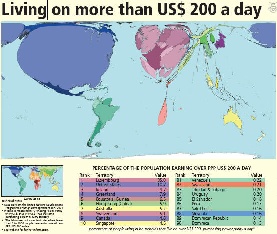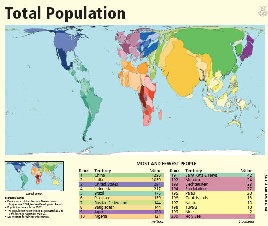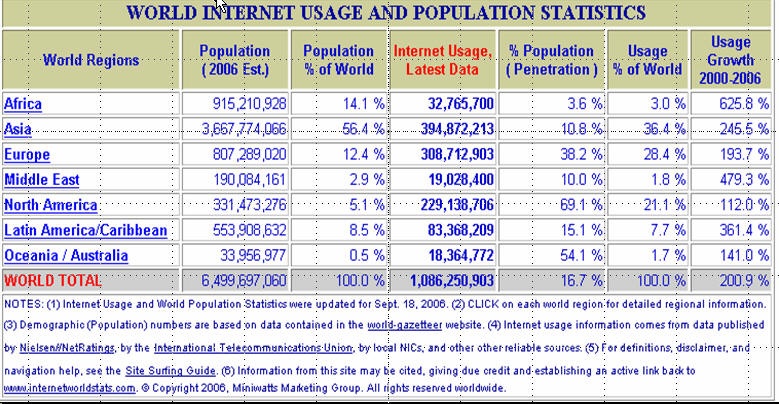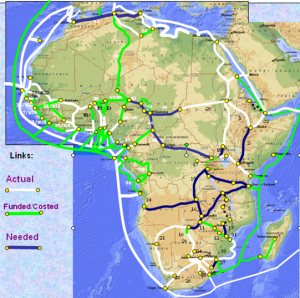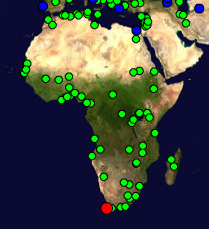...
Another way of looking at the poor situation in Africa is to look at Figure 10, illustrating the lack of Internet users in Africa compared to the rest of the world.
Figure 10a: | Figure 10b: | Figure 10c: |
|---|---|---|
| |
|
Capacity
International capacity to African countries is mainly provided via satellite or via fibre links. Typically bandwidth costs in $/Mbits/s are 300-1000 times as expensive as fibre. However in 2004 only 14 of 49 sub-Saharan countries had access to fibre according to NEPAD. In fact as seen in Figure 11:
...
One result and immediate cause of this is the cost of this are costs of Internet connections in Africa and how they relate to income (See Compare Figure 1313a and 13b) and affordability.
Figure 1313a: 2002 | Figure 13b: |
|---|---|
|
|
Opportunities
Africa has close to 1 billion people or about 14% of the world's population. However, the Internet penetration shown in the table below is only about 3.6% so it is a huge potential market. However, this .
At the same time there are promises of considerably increased fibre connectivity to sub-Saharan Africa in the next two years (in particular in time for the Soccer World Cup in South Africa in 2010) as can be seen in Figure 14.
Figure 14: |
|
|---|---|
|
|
Also the UN, governments such as China, the UK, Europe and companies such as AMD, Intel, Microsoft, Cisco, Nokia and Ericsson are recognizing the opportunities and needs and investing. This will introduce challenges of new business models (e.g. development models such as more inclusive business models; bottoms-up approach; working in new regulatory, policy and poor infrastructural availability environments; micro-payments, ; content in many new local languages, ; use of wireless for last mile connections, Internet kiosks and cafes, etc.).
Interesting Trends:
...
